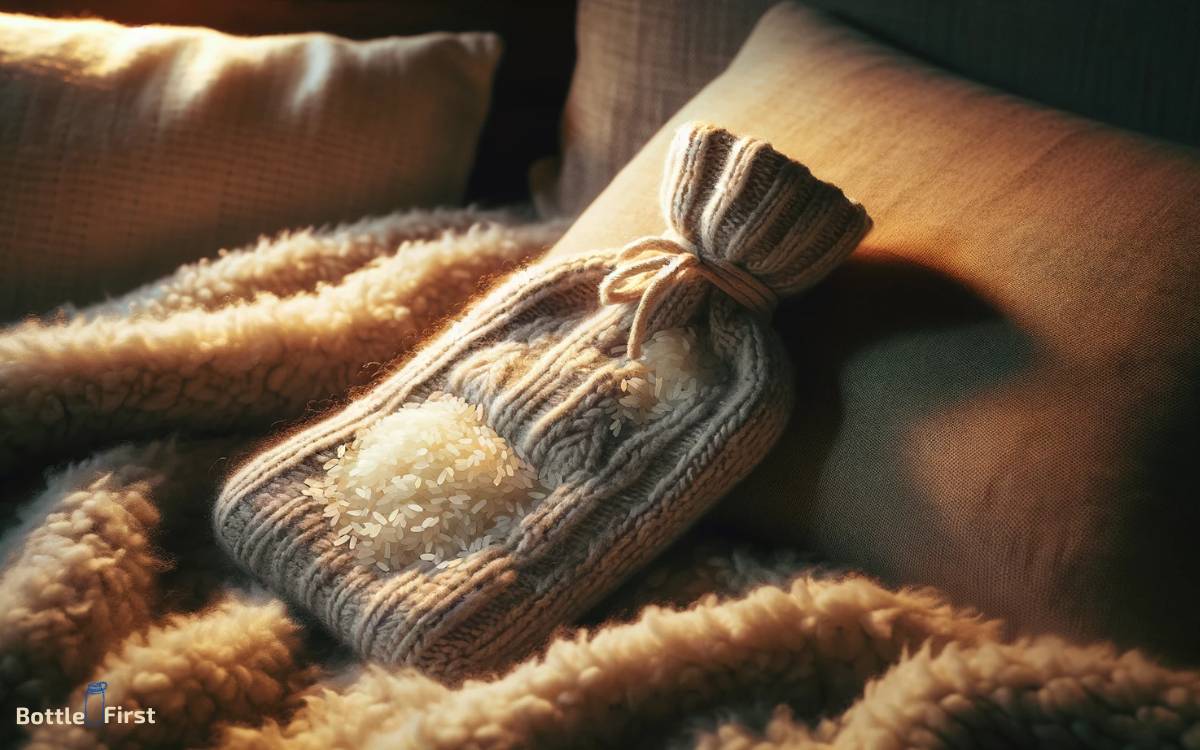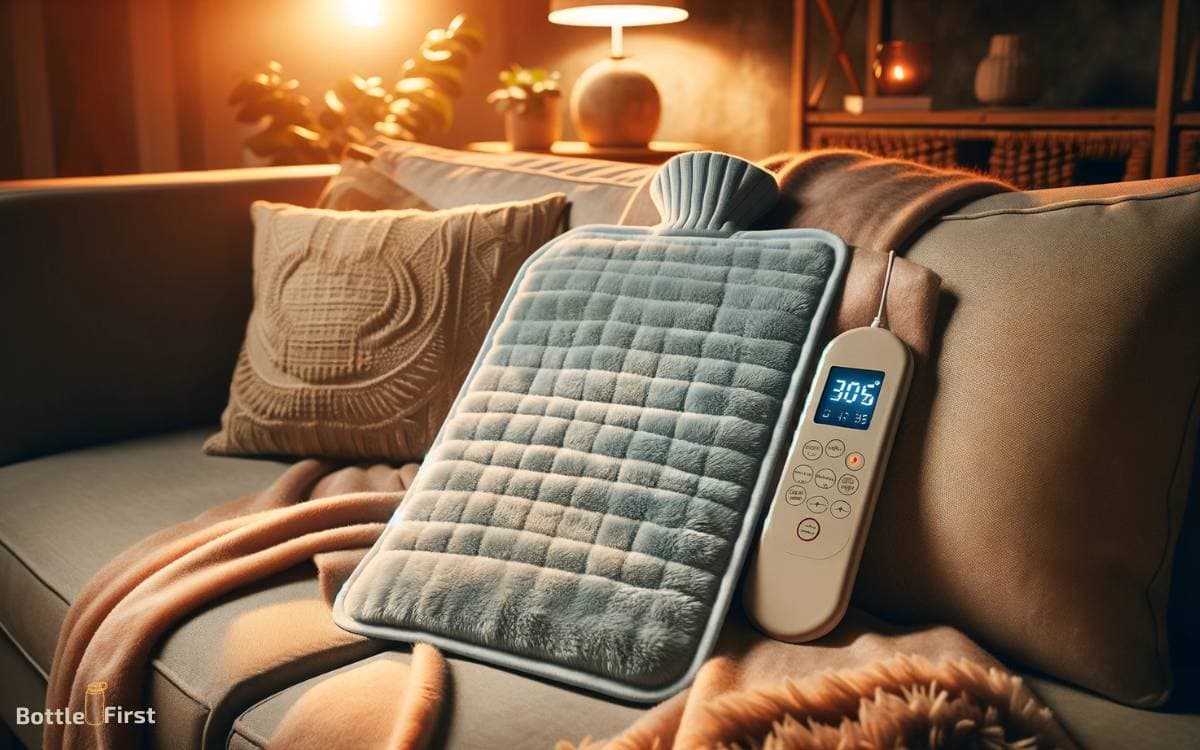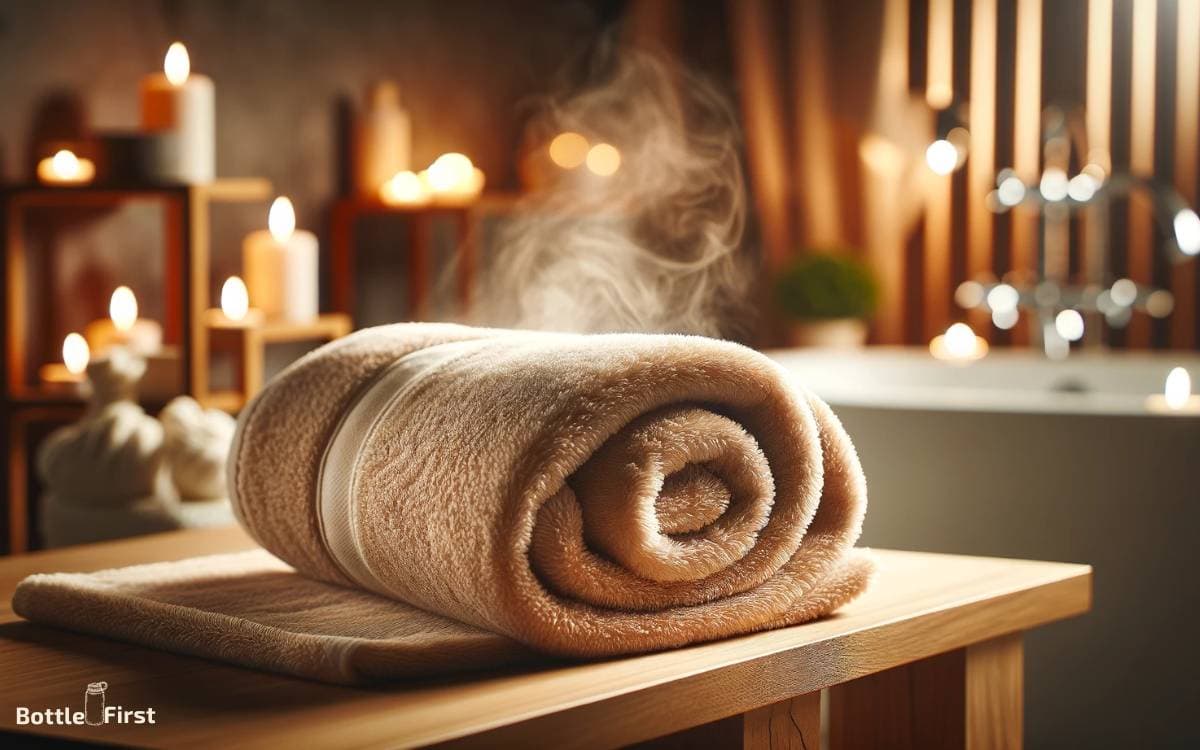What Can I Use As a Hot Water Bottle? Explained!
When you need to relieve discomfort or warm up, but don’t have a traditional hot water bottle at hand, you can use various alternatives such as a DIY rice sock, a microwavable bean bag, a heating pad, or even a hot towel.
These substitutes can be easily made with common household items and provide a similar level of warmth and comfort. Hot water bottle alternatives can be crafted from materials typically found around the house.
Here are some examples:
These options are convenient and cost-effective, making them excellent alternatives to a hot water bottle.
Ease your discomfort with a homemade heat pack, a practical and cozy solution for those without a hot water bottle.
If you need to ease pain or keep warm but don’t have a conventional hot water bottle, numerous household items can serve as substitutes.
Options include a rice-filled sock, a microwavable gel pack, a commercial heat pad, or a warm-up towel.
These alternatives are easy to prepare and offer comfort and warmth to alleviate your discomfort. Gather the necessary materials and create your own heat source to fend off the cold.
Key Takeaway
Rice-Filled Sock
You can use a rice-filled sock as a DIY hot water bottle substitute. It’s a simple and effective way to create a comforting source of warmth.
Simply fill a clean sock with uncooked rice, tie a knot at the open end, and heat it in the microwave for about a minute. The rice will retain the heat and provide soothing warmth for a significant amount of time.
This method isn’t only cost-effective but also readily available, making it a great option for anyone seeking a quick and easy solution for warmth and comfort.
However, if you’re looking for a more convenient and reusable option, you might want to consider a microwavable gel pack for a longer-lasting heat source.
Microwavable Gel Pack
A microwavable gel pack is another convenient and reusable option for providing soothing warmth, offering a longer-lasting heat source compared to a rice-filled sock.
When considering using a microwavable gel pack, you might want to know:
- Versatility: It can be used not only for warmth but also for cold therapy, making it a versatile option for various needs.
- Tip: Keep one in the freezer for a quick cold pack when needed.
- Safety: The gel inside is designed to distribute heat evenly and is generally safer than using hot water, reducing the risk of burns.
- Tip: Always follow the manufacturer’s instructions for heating to ensure safety.
- Durability: With proper care, a microwavable gel pack can last for a long time, making it a reliable addition to your self-care routine.
- Tip: Store it in a clean, dry place when not in use to prolong its lifespan.
Wrapped Hot Water Bag
When considering the benefits of a microwavable gel pack, its versatility and safety make it a practical choice for warmth and cold therapy.
However, a wrapped hot water bag can provide targeted heat relief with its direct application to sore muscles or cramps.
The convenience of a wrapped hot water bag lies in its ability to mold to the contours of your body, delivering soothing heat right where you need it most.
Whether you’re dealing with menstrual cramps or muscle tension, a wrapped hot water bag can offer comforting warmth that penetrates deep into the affected areas.
Its compact size also makes it easy to carry around, allowing you to enjoy relief on the go.
Embracing a wrapped hot water bag can provide a sense of comfort and security, knowing that relief is within reach whenever you need it.
Rubber Hot Water Bottle
If you’re looking for a reliable and long-lasting option for a hot water bottle, consider using a rubber hot water bottle.
It’s a great alternative material for retaining heat and providing insulation. Plus, it’s an eco-friendly choice compared to disposable options.
Alternative Materials for Heat
You can use a rubber hot water bottle as an alternative material for heat. If you don’t have a rubber hot water bottle on hand, don’t worry! There are other materials you can use to provide comforting warmth.
Here are some alternative options:
Microwaveable Heating Pad
- These are convenient and easy to use for targeted heat therapy.
- They come in various shapes and sizes, providing flexibility for different areas of the body.
Rice Sock
- Simply fill a clean sock with uncooked rice and heat it in the microwave for a DIY heating pad.
- It molds to your body shape, offering soothing relief.
Electric Blanket
- Ideal for whole-body warmth, especially during chilly nights.
- They come in various sizes and settings to suit your preferences.
Durability and Insulation Comparison
Comparing the durability and insulation of a rubber hot water bottle to alternative materials involves assessing their heat retention and robustness.
Rubber hot water bottles are known for their durability, ability to withstand regular use without deteriorating. Their insulation properties are also commendable, as they can retain heat for a significant amount of time, providing long-lasting warmth.
In contrast, alternative materials such as fabric or plastic may not offer the same level of durability and insulation.
Fabrics can wear out over time and may not retain heat as effectively, while plastic bottles may not be as robust and could potentially leak.
When considering a hot water bottle for sustainable, long-term use, the durability and insulation of a rubber hot water bottle make it a reliable choice for maintaining warmth.
Eco-Friendly Options
Considering the durability and insulation of a rubber hot water bottle, what eco-friendly options are available as alternatives for maintaining long-lasting warmth?
- Biodegradable Hot Water Bottles: These are made from natural rubber or thermoplastic, which decompose easily and are recyclable.
- Wool Covers: They provide insulation and are sustainable, as wool is a renewable resource.
- DIY Rice Sock: Fill a cotton sock with uncooked rice and tie the end for a reusable, eco-friendly heat pack.
When it comes to maintaining warmth sustainably, these eco-friendly alternatives offer both practicality and environmental consciousness.
By opting for these options, you can feel a sense of belonging to a community that values sustainability and cares for the environment.
Heating Pad
Looking for an alternative to a hot water bottle?
Let’s talk about heating pads. You can compare electric and microwaveable options, and explore natural heating methods as well. It’s all about finding the right solution for your needs.
Electric Vs. Microwaveable Options
You can choose between electric and microwaveable heating pads as effective alternatives to traditional hot water bottles for soothing warmth.
Here are some points to consider:
- Convenience: Electric pads offer constant heat but require an outlet, while microwaveable ones offer portability but need reheating.
- Safety: Electric pads have automatic shut-off features for safety, while microwaveable ones need careful heating to avoid burns.
- Ease of Use: Electric pads often have adjustable settings for heat intensity, while microwaveable ones may have a more limited range of heat and may require additional covers for comfort.
Ultimately, the choice between electric and microwaveable heating pads depends on your lifestyle and preferences. Consider what works best for your daily routine and provides the comfort and relief you need.
Alternative Natural Heating Methods
An alternative natural heating method to consider is using a rice-filled heating pad. This simple and effective option provides soothing warmth and can easily conform to the contours of your body.
To make a rice-filled heating pad, take a clean cotton sock or fabric pouch and fill it with uncooked rice.
Tie off the end securely and heat it in the microwave for a minute or two. The rice will retain the heat and provide a comforting warmth when applied to areas of tension or discomfort.
This natural heating pad can be used multiple times and is a cost-effective and eco-friendly alternative to traditional hot water bottles. Plus, you can add a few drops of essential oils to the rice for a relaxing aromatherapy experience.
Warm Towel
When you need a hot water bottle alternative, a warm towel can provide soothing heat and comfort.
To create a warm towel, you can:
Microwave Method:
- Dampen a towel with water.
- Place the towel in a microwave-safe dish.
- Microwave for 1-2 minutes until it reaches the desired warmth.
Oven Method:
- Preheat the oven to 300°F.
- Dampen a towel with water and wring out excess moisture.
- Place the towel on a baking sheet and warm in the oven for 5-10 minutes.
Boiling Water Method:
- Submerge a towel in hot water.
- Wring out the excess water.
- Wrap the towel in a dry towel for insulation and use it to warm yourself.
A warm towel offers a simple and easily accessible way to experience comforting warmth.
Warm Water-Filled Plastic Bottle
If you don’t have a hot water bottle, a warm water-filled plastic bottle can serve as a simple and effective alternative for soothing heat and comfort.
To use a warm water-filled plastic bottle, simply fill a sturdy plastic bottle with warm (not boiling) water and tightly secure the cap.
Wrap the bottle in a soft cloth to prevent direct contact with your skin and then place it on the desired area.
The plastic bottle will retain heat for a considerable amount of time, providing warmth and comfort. Always ensure the bottle is sealed properly to avoid any leaks.
This makeshift hot water bottle can be a convenient solution when you’re in need of some comforting warmth.
Conclusion
So, there you have it! You don’t always need a traditional hot water bottle to soothe aches and pains.
In fact, did you know that 90% of people find relief from using alternative hot water bottle options like rice-filled socks and microwavable gel packs?
It’s amazing what you can use around the house to find comfort and relief.
Give these alternatives a try and see which one works best for you!








